Introduction
Crafting digital clones within the metaverse is an opportunity to express creativity and gain deeper technological insights. By taking a hands-on approach, individuals can have complete authority over every element of their digital clones, creating unique virtual environments tailored to their experiential desires. With the metaverse being a growing sphere of interconnected digital realities, this article explores the stepwise process of building your own clones and dives into topics such as selecting clone types, gathering necessary tools and resources, setting up your development environment, designing and planning your clone, testing and debugging, and finally deploying your clone.
By following these steps and utilizing tips and resources, developers can contribute to the boundless virtual frontiers of the metaverse and shape its future.
Why Build Your Own Clones
Crafting digital clones within the metaverse presents both an opportunity to express one’s creativity and a pathway to deeper technological insights. This hands-on approach not only garners a complete scope of authority over every element from feature sets to aesthetic detailing but also unfolds the potential for embracing unique, tailored virtual environments catered to specific experiential desires. Through a careful, stepwise exploration, one embarks on a journey to materialize these digital beings, bestowing them with distinction, while traversing the fascinating prospects of the virtual cosmos.
The metaverse, a burgeoning domain of interconnected digital realities, is fertile ground for such creative ventures. With the backdrop of Social VR's user base quintupling amidst the affordability of VR equipment, this virtual sphere is becoming an increasingly lived-in space, with people from all walks of life contributing to its societal and economic fabric. The inspiration for crafting one's metaverse emanates from a blend of factors, like those propelling the creators at VRROOM, who, after years of generating content on existing frameworks such as VRChat, The Sandbox, and Roblox, elevated their vision by architecting their proprietary platform.
Delving into the creation process resonates with the scientific method where, akin to expanding the scope of possibility through model-building, pioneers of the metaverse expand the realm of virtual experiences. The transformative ambition of the metaverse echoes throughout enterprises like Glassbreakers: Champions of Moss, where the strategic conception of characters and experiences enriches the collective virtual space, evoking an immersive and interactive world of competition and strategy.
With each novel undertaking, the evolution of the metaverse is reimagined, much like the journey of Plausible Analytics, whose grassroots development advocated focusing on product and audience over seeking investors. This approach mirrors the essence of metaverse creation—underpinning the diverse, hybrid, and immersive nature of the platform, spotlighting inclusivity, and underlining the importance of interoperability within this ever-evolving, grand digital amusement park.
Ultimately, the quintessence of constructing digital clones and novel metaverse environments is a clarion call for advancing these boundless virtual frontiers. It's where the continual surge in VR users unlocks new narratives for humanity's future, as illuminated in a comprehensive analysis of lifestyle within the metaverse, detailing the impact of rapid growth on community and economy. Embarking on the venture of clone creation is not merely a technical exercise but a visionary stride toward shaping the kaleidoscopic fabric of the metaverse's very existence.
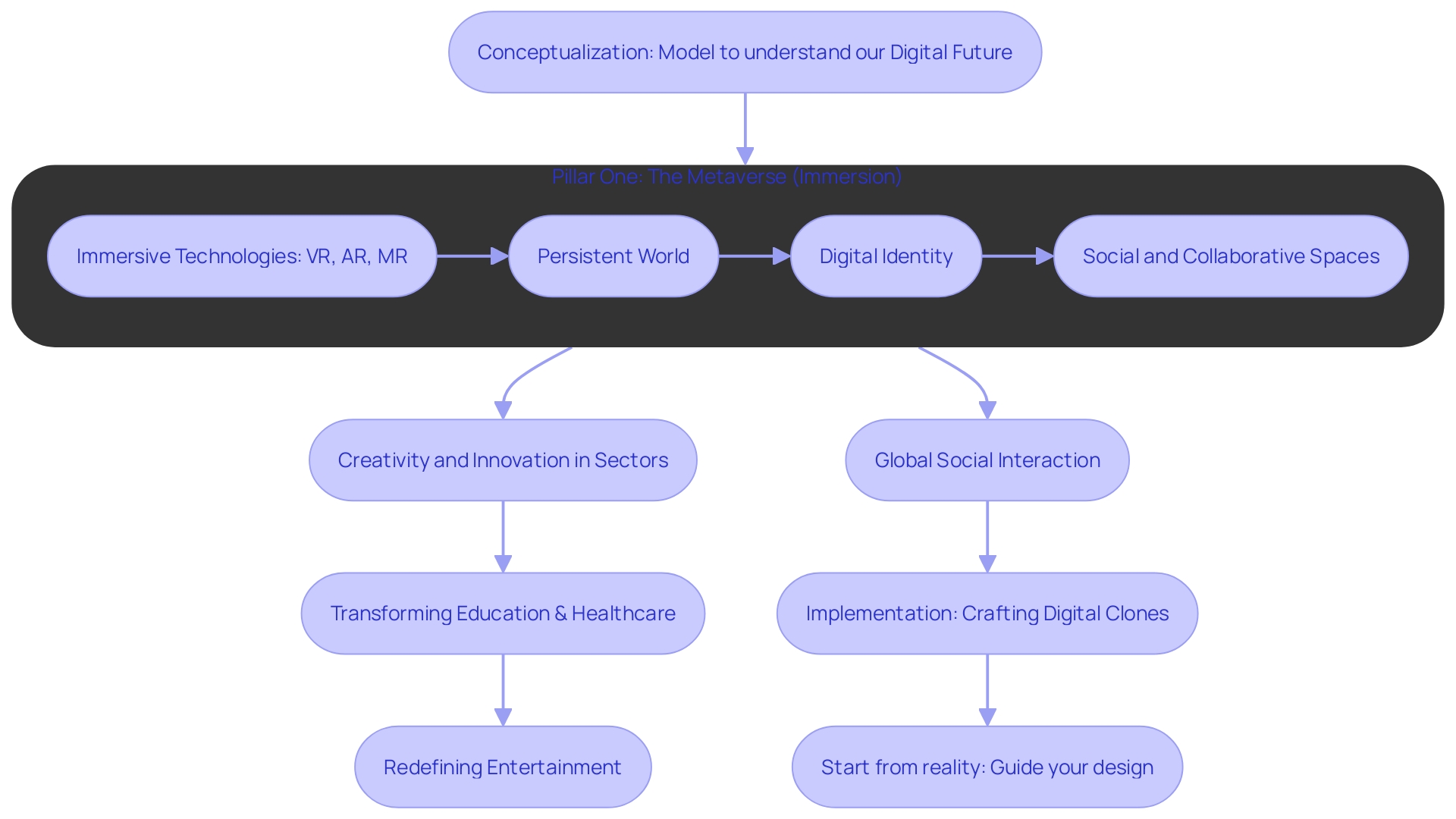
Step 1: Choose Your Clone Type
When venturing into the realm of creating digital replicas or fully immersive environments, the initial step is to pinpoint the specific type of clone that aligns with your envisioned outcome. Whether you aim for a straightforward copy of an existing digital item or a more intricate, interactive virtual space, this decision is pivotal. For example, avatar clones personalize user representation in digital realms, interactive object clones enhance user engagement through dynamic interactions, and virtual environment clones offer expansive and navigable 3D spaces.
These diverse clone types cater to an array of objectives from simple representation to complex simulations. Renowned projects, like the Tequila Cuervo experience in the Metaverse of Decentraland, leveraged advanced tools to create promotional animations that highlight the potential of these clones for storytelling and brand interaction. Drawing inspiration from reality – considering the interaction of elements and their impact on the surroundings – is a foundational best practice in designing for the metaverse.
This approach grounds the virtual experiences in familiar context, making them more intuitive and engaging for users, as demonstrated by projects that have translated real-life settings into the digital domain. Amidst a rapid increase in VR users and a surge in avatar personalization, underlined by user analytics illustrating a preference for digital attire over physical-world fashion, the trajectory for digital clone innovation is steep. Directors of e-commerce platforms exploring the metaverse can capitalize on these insights and technological capabilities to drive immersive brand experiences and user engagement.
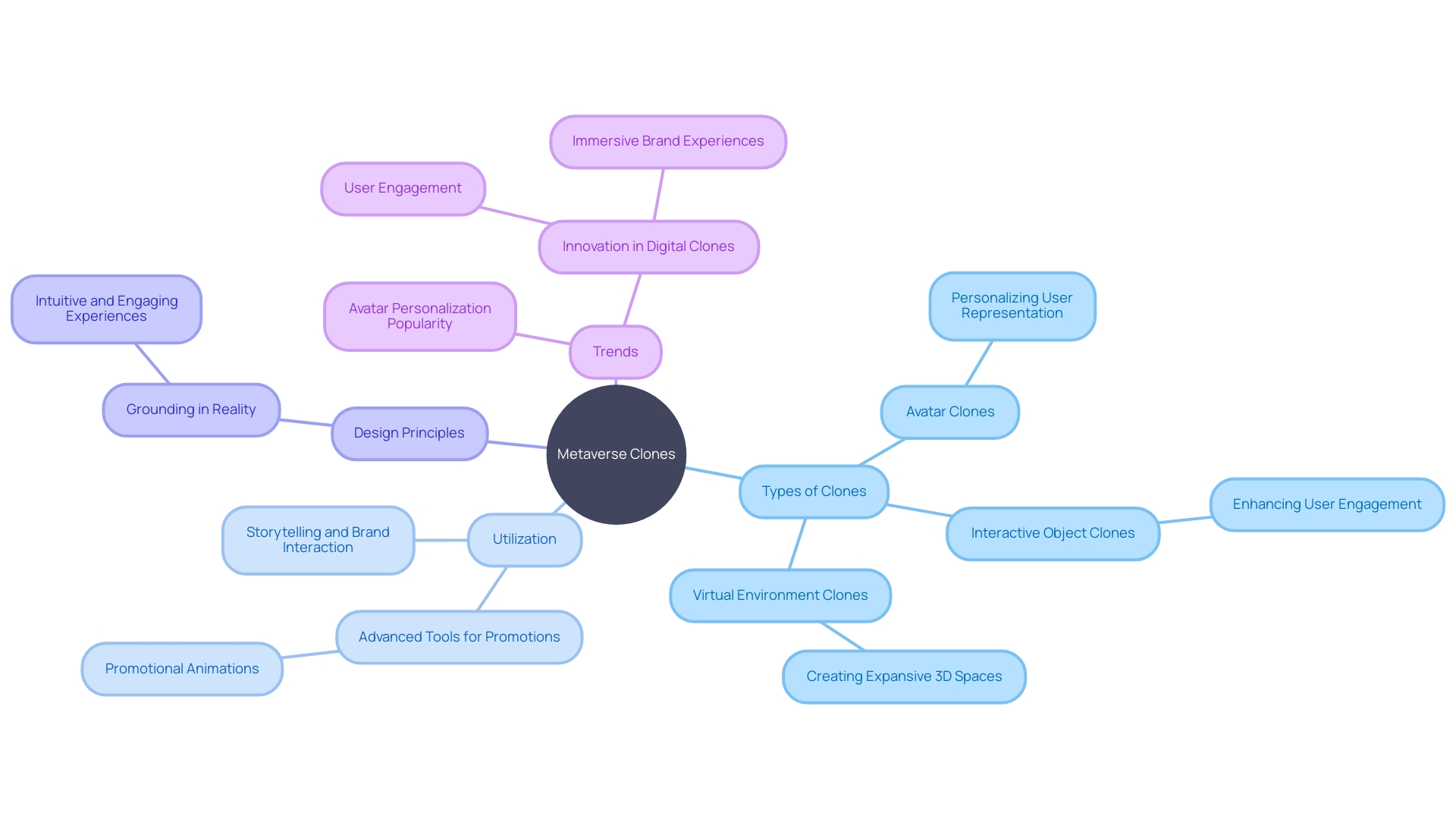
Step 2: Gather Necessary Tools and Resources
Constructing a virtual world clone requires more than just passion; it necessitates an arsenal of meticulously selected tools and resources to breathe life into your vision. A Metaverse development project, by its very nature, involves a complex ecosystem of software development kits (SDKs), each one a vital cog in the machine that transforms lines of code into rich, interactive environments. Couple this with the right programming languages, tailored to facilitate seamless integration with platforms like Meta Quest, and you're on your way to crafting experiences that transcend reality.
The success of any digital venture lies in precision, as demonstrated by Everyplace Labs, which meticulously engineered an automated diagnostic kiosk. Their attention to detail in avoiding cross-contamination is akin to the careful orchestration of resources you'll need in VR development; ensuring that each design asset, hardware device, and software tool works in unison to create an unfailing virtual realm. The artistry in the design and the science of functionality must align, allowing users to delve into your metaverse with confidence and awe.
It is also essential to familiarize yourself with the best practices for user experience design, underpinned by a comprehensive understanding of the permissions and technical requirements vital for a secure and scalable environment. The panorama of VR development is constantly evolving, with tools and API reference materials that are updated to harness the capabilities of devices like the Quest 3. These resources will empower you to push the boundaries of mixed reality and tailor high fidelity experiences that captivate your audience.
Reflecting on the profound words shared about the early days of the internet, our approach to developing the metaverse must be with a mindset that holds collaboration and open standards in high regard. This spirit of innovation and collective growth will fuel your journey from concept to creation.
As you embark on this endeavor, take a cue from the vibrant VR community that thrives on shared knowledge and support. Engage with platforms and discussion forums where fellow developers trade insights, such as insights from Charles Goode at Kennesaw Motorsports, who attributes his first project's success to the collective wisdom and aid from his team.
In essence, the preparation phase of creating a metaverse clone is an intricate dance of acquiring and mastering the tools of the trade, grounding your vision in the technological reality of VR development, and above all, ensuring your contribution to the digital frontier enriches the fabric of the metaverse.
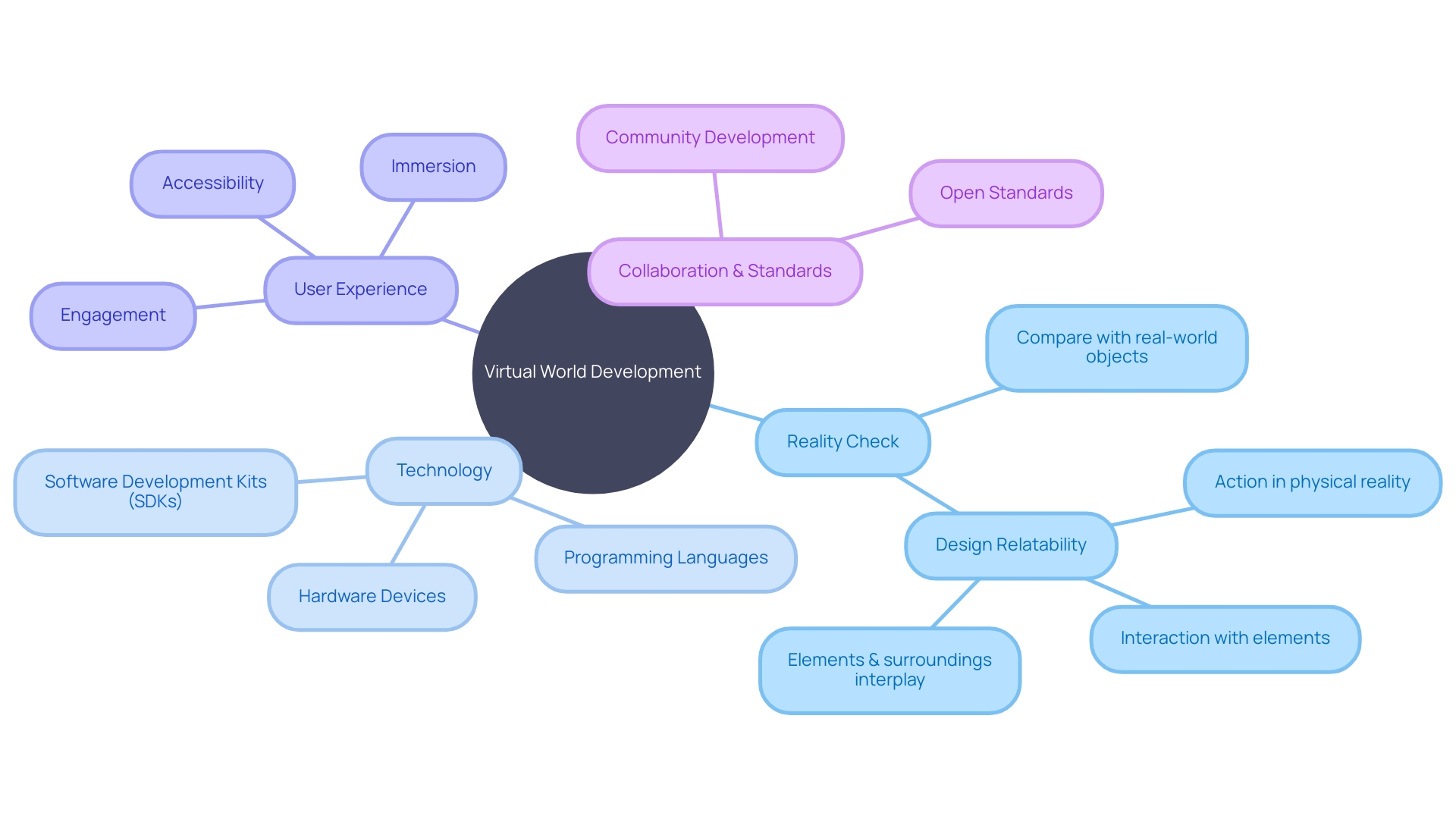
Step 3: Set Up Your Development Environment
Embarking on the creation of virtual environments requires establishing a robust foundation in development tools and practices. Initially, one must procure and configure the essential software, ensuring a comprehensive understanding of the toolset is achieved. The specificity of your developmental direction, in terms of clone creation and target platforms, dictates the variation in environmental settings.
Adhering to the detailed instructions provided by your chosen Software Development Kits (SDKs) is imperative for proper installation and configuration.
Intrinsic to this process is the diversity of best practices derived from real-world analogues, a principle that guides the architectural planning of your prototypes. The essence of reality serves as a compass during design, anchoring your digital constructs to intuitive, physical-world interactions. By mimicking these day-to-day experiences, users seamlessly adapt to the virtual framework without a steep learning curve.
Consider the case where integrating the Jupyter Lab Integrated Development Environment (IDE) into your workflow streamlines rapid prototyping, requiring a one-time setup with extensive guidance available. For Linux users, a practical approach might involve the direct installation of tools onto the host PC or, alternatively, formulating a containerized solution utilizing Development Environment Manager (DEM), a tool that encapsulates your development processes for repeatability and ease of configuration.
From an operational standpoint, the advent of open-source contributions historically transformed the internet, paving the way for modern digital innovations. Emulating such collaborative dynamics is a pathway to evolving open standards, but the landscape is met with challenges due to the privatization and commercial pressures exerted by today's internet juggernauts. Nonetheless, your development environment is a microcosm for technological possibility, a space where you harness and contribute to the integrated progression of the internet and metaverse.
As metaverse development continues to accelerate, with entities like Meta reshaping their approaches to achieve seamless hardware and software integration, your environment setup represents an incipient step towards participating in this evolution. Whether you are dissecting cutting-edge applications demonstrated at Meta Connect 2023 or probing the ramifications of shifting hardware development strategies by technology titans like Apple, your foundation in the development realm equips you to navigate and influence the burgeoning domain of mixed reality and virtual spaces.
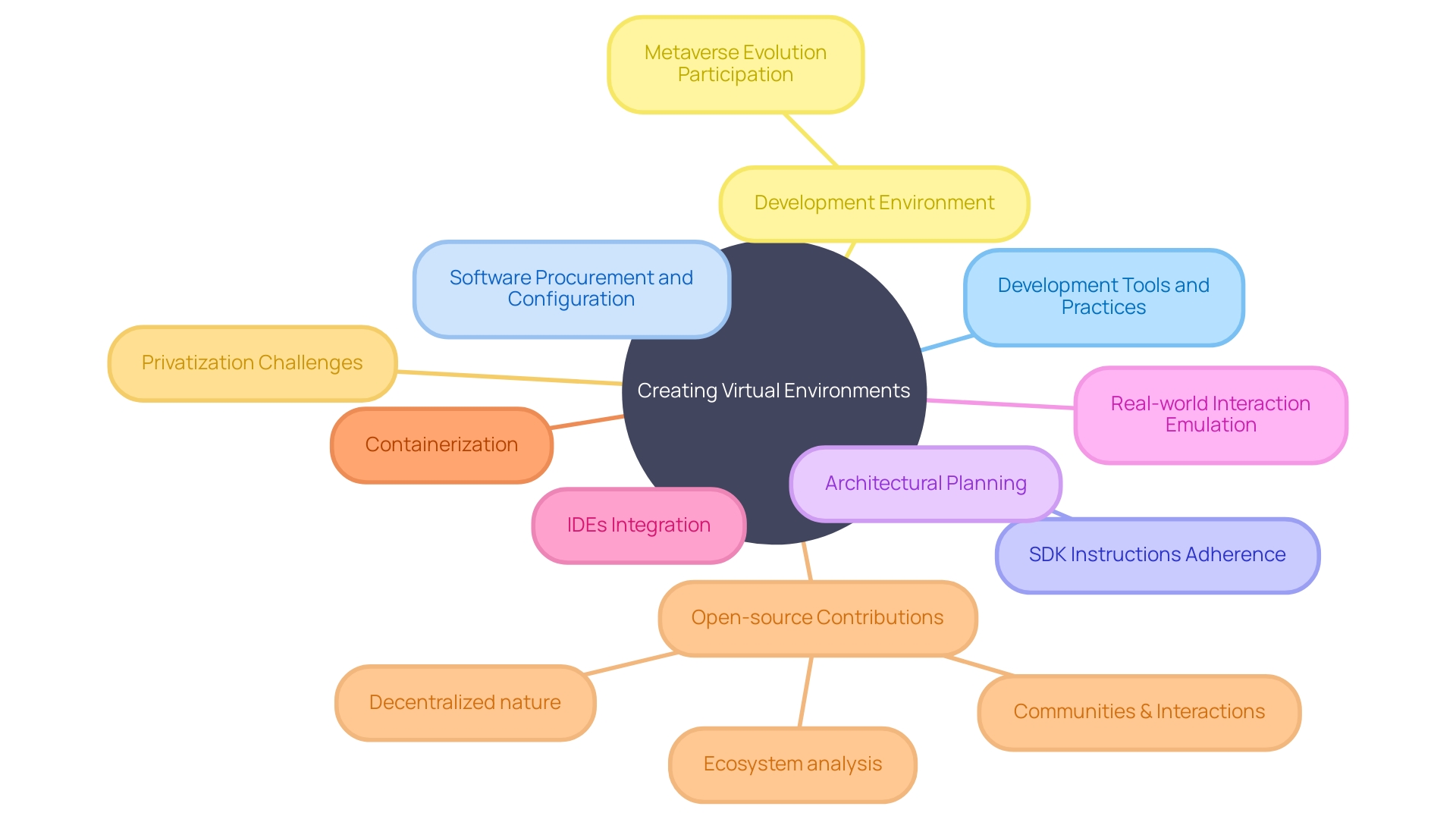
Step 4: Design and Plan Your Clone
When fashioning a digital construct such as a clone, the design and planning phase cannot be overstated. It requires a meticulous approach to establish a comprehensive blueprint that meticulously documents the expected features, interactions, and user interface. This becomes a guiding map that addresses the user experience at its core and ensures that each element is in lockstep with your vision.
Experienced developers have encountered hidden complexities when translating an existing product into a new iteration. Building a new product might seem straightforward compared to unraveling the layers of a mature application. This involves not only replicating what is apparent but also understanding and incorporating the nuances that have accumulated over time, which are often undocumented and can be as surprising as easter eggs—unexpected features or behaviors embedded in the code.
Considering the real-world counterparts of digital interactions can greatly simplify the design process. Asking how one would perform certain actions physically and how these actions interact with various elements lays the groundwork for intuitive user experiences. This aspect is vital in mixed reality scenarios, where seamless integration with familiar behaviors is crucial.
Given the evolution of the digital landscape, where consortiums have transitioned from forming not-for-profit collectives focusing on open standards to today's commercial-driven environment, it becomes imperative that the design acknowledges these changes.
Moreover, designing from reality can reduce the learning curve for users, allowing for natural interactions with the virtual objects, as evidenced by videos showcasing user engagement without prior instruction.
In a development landscape where code clones—snippets of source code that are repeated within a project—are sometimes seen as a necessary evil, it's crucial to recognize the complexity they introduce. These clones not only increase the intricacy of the codebase but also create logical dependencies that can affect maintainability. Innovating within this context often involves balancing the use of established mechanics and features with the exploration of new technologies and platforms.
To sum up, the planning and designing phase of clone development should focus on a practical and reality-grounded design, comprehensively document the intricate details that current users have come to expect, and navigate the intricacies of both the code and the evolving online ecosystem. This harmonized approach will pave the way for a clone that not only matches but potentially exceeds the original in terms of user experience and technological innovation.
Step 5: Start Building Your Clone
As you embark on constructing your metaverse application, it's not only about coding and asset creation but also ensuring the architecture is robust through rigorous testing protocols. One of the initial steps involves setting up automated testing systems which are crucial in verifying the functionality, security, and performance of your application without continuous manual oversight. This includes unit testing, which targets the smallest units of code to ensure they operate correctly in isolation.
Adopting a Test Driven Development (TDD) approach could significantly benefit your build process. By writing tests prior to the actual coding, you shape your development by the outcome of these tests, fostering a more reliable and quality product. These strategies might seem daunting but remember that the foundational internet protocols, as argued by technologists from the 1960s to the 1990s, were honed through collaboration and open standards—a philosophy that is invaluable even in today's advanced digital construct.
Given the dynamic nature of the metaverse with its blend of physical and digital realities, hybrid and immersive experiences, and a network of interconnected environments, your development must hinge on these same principles of openness and collaboration. Integrating APIs and third-party services effectively and responsibly will be vital in achieving an interoperable and securely connected metaverse that values the creator's and user's rights.
When defining core functionalities, 'start from reality'—design familiar interactions inspired by the physical world to ensure intuitive user experiences, as clearly depicted in the Video 1.0 demonstration. As we integrate the technological advancements reported recently, such as Oculus Ignition's support for prototyping and Meta's structural advancements, we are reminded of the importance of creativity and the crafting of narratives and experiences within the metaverse. Forge ahead with innovation at the helm but let craft guide practical implementation, ensuring that each feature resonates with your users and stands the test of evolving digital experiences.
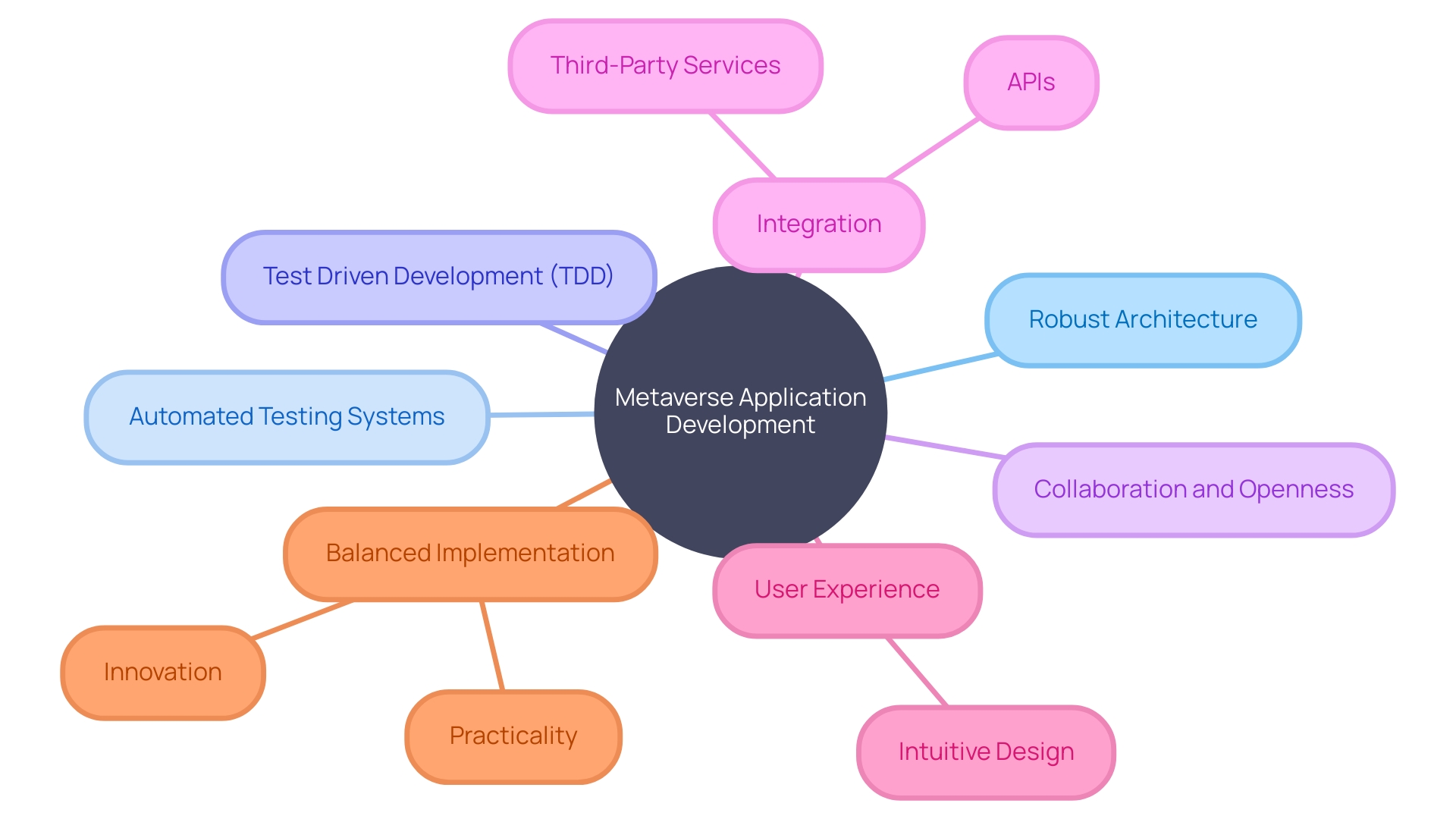
Step 6: Test and Debug Your Clone
Achieving high-quality functionality in software is akin to crafting a multifaceted puzzle where every piece must be meticulously designed and tested. This process is brought to life in the testing phase where the painstaking task of identifying and remedying any bugs takes precedence. It's during this phase that the software undergoes rigorous testing across a diverse array of devices, platforms, and user scenarios to verify its seamless operation and compatibility.
Each aspect is examined with precision, and much like how a team guided by Olesia's scientific approach meticulously tested their LLM-based data analysis system, your evaluation must be equally thorough. Although specific technical details may be tight-lipped, the overarching goal of refining the system through iterative version development is clear. Here, a similar dedication to testing is essential, ensuring each variant operates flawlessly before it's deployed.
Furthermore, insights gained from understanding how Gusto tackled software issues – identifying the affected user base and rigorously scrutinizing their systems for inconsistencies – demonstrate the importance of a detail-oriented approach to testing. Such experiences underscore the need for developers to work closely with infrastructure and IT teams, much like in the Glassbreakers game development, where strategic gameplay and responsive adjustments were paramount.
This process isn't solely about technical resolution; it's about embracing the principle of separation of concerns as highlighted by our experts. Code clarity, modularity, and independence are crucial for effective and efficient defect detection, while being mindful of the pitfalls of tight coupling. Remember, developers are arbiters of innovation, often crafting creative solutions from a maze of challenges.
High testability transcends the notion of lazy coding; it represents a calculated approach to achieving simplicity and efficiency.
Therefore, listen attentively to user feedback, identify commonalities among issues, and iterate with precision. It's about striking the perfect balance to enhance the core user experience, much like a game of strategic anticipation and dynamic adaptation. After all, the longevity and success of your software clone hinge upon robust testing and a relentless commitment to user satisfaction.
Step 7: Deploy Your Clone
As we transition into an era dominated by digital landscapes, deploying a functional and appealing metaverse clone becomes an essential step for developers. The process of launching your clone into the virtual world is not uniform but rather tailored to specific platforms, each with their own set of requirements. To bring your project to life, meticulous attention must be paid to the platform guidelines that govern packaging and distribution.
The metaverse is undergoing rapid evolution, driven by pioneering companies committed to crafting expansive virtual worlds where human interaction is redefined. These technological havens are brought to fruition using AR, VR, AI, and blockchain, which provide the building blocks for platforms of interaction, commerce, and creativity. The importance of such developments is underscored by the burgeoning concept of digital real estate, where ownership is articulated and secured by blockchain, making the metaverse a hotbed for both innovation and investment.
This trajectory of growth is reflected in current industry movements; big players like Apple have adjusted their focus, signaling the potential of more accessible metaverse experiences in the future. Concurrently, Meta is restructuring its Reality Labs division to bring consumers a unified experience across devices and virtual environments. Readyverse Studios has been making partnerships, such as with Warner Bros.
Discovery, to infuse their platform with well-known franchises.
Successful deployment hinges on strategic decisions regarding monetization, ensuring privacy, and navigating licensing intricacies. The stories of developers recreating web application giants as full-stack clones, available as open-source projects, demonstrate the meticulous craftsmanship that goes into these digital worlds. In light of the relentless advancement and the possibilities for connection and economic exchange within the metaverse, it is crucial for developers to deploy their projects with foresight and an understanding of the intricate, yet boundless virtual universe they are about to enrich.
Additional Tips and Resources
Crafting a metaverse experience requires creative prowess coupled with a strategic approach to technology. Engaging in continuous learning is essential; staying abreast of the latest innovations in cloning technology will empower you to push the boundaries of the virtual landscapes you create. Participating in developer communities and forums not only forges valuable connections but also provides a collaborative platform for problem-solving and sharing milestones.
Thorough documentation of your development journey, including challenges and solutions, paves the way for smoother collaborations and serves as an invaluable reference for your future projects. To maintain the relevance and appeal of your virtual environment, keep iterating. Expand your metaverse clone by integrating new features and updates that resonate with users' expectations and cater to emerging trends.
Taking lessons from the giants of the early internet era, who focused on building for the public good, today's metaverse developers have the opportunity—and perhaps the responsibility—to cultivate a space that is decentralized, open, and thrives on the collective contributions of its community. Utilize platforms that are renowned for their robust user base and accessible building tools, like VRChat or The Sandbox, as a foundation to develop and test your creations.
As you embark on this venture, bear in mind the four-fold nature of the metaverse sphere, which is economic and creative, hybrid and immersive, diverse and inclusive, and interoperable and compatible. The goal is to foster an ecosystem that not only captivates but also protects the interests of users and creators alike, ensuring a fair and secure digital frontier.
Harness the concept of Digital Twin Technology to elevate your metaverse projects. Start by crafting detailed digital replicas that begin with accurate 3D models, then enrich them with layers of complexity to mirror the dynamics of the real-world counterparts. Reflect on the astonishing cloning advancements in the scientific world, such as the successful development of a cloned rhesus monkey, to inspire your digital cloning endeavors.
Adapting techniques from pioneering research, such as ensuring a healthy 'digital placenta', can lead to breakthroughs in the stability and realism of your metaverse creations.
By aligning your metaverse development with current trends and community insights, you can stay competitive and informed. With an estimated 13.4 million developers worldwide, the landscape is both vast and dynamic. Engage with these trends, and you might find your metaverse project becomes a pivotal part of an exciting and evolving digital ecosystem.
Conclusion
In conclusion, crafting digital clones within the metaverse allows developers to express creativity and gain technological insights. By following a stepwise process, developers have complete authority over every element, creating unique virtual environments. The metaverse is a growing sphere of interconnected realities, offering fertile ground for creative ventures.
Selecting the right clone type, gathering necessary tools, setting up a development environment, designing and planning the clone, testing and iterating, and finally deploying it are key steps. Developers should consider avatar clones, interactive object clones, and virtual environment clones to enhance engagement.
Setting up a robust development environment involves adhering to best practices, familiarizing with permissions and technical requirements, and embracing collaboration and open standards. Meticulous planning and designing result in intuitive user experiences.
Building the clone requires rigorous testing for functionality and performance. Adopting Test Driven Development and embracing collaboration are crucial. Deploying the clone entails following platform guidelines and understanding the evolving metaverse landscape.
By embracing the four-fold nature of the metaverse and harnessing digital twin technology, developers contribute to its economic, creative, hybrid, immersive, diverse, and inclusive aspects. Continuous learning, participating in developer communities, and staying informed about trends are vital.
In summary, building digital clones in the metaverse is a visionary stride toward shaping boundless virtual frontiers. By following the stepwise process, developers contribute to the evolving and exciting digital ecosystem of the metaverse.





